« The Best 8 Pounds I Ever Spent | Main | Creating Scrap, Using Scrap »
May 14, 2005
Mosques, Mandirs, and Monasteries
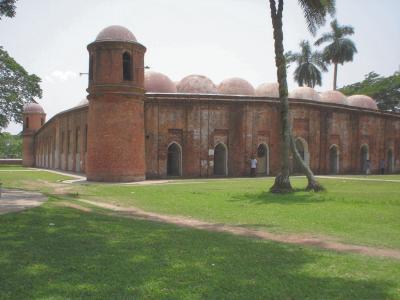
Shait Gumbad Mosque
Near to Khulna is the town of Bagerhat, famous for one of the most magnificent mosques in Bangladesh, the 'Shait Gumbad'. I took a local bus to visit it, and some of the other mosques in the area. Built in 1459, it is some 60 metres long, and has 77 domes and 35 doorways. Although classed as an ancient monument, it is still in use as a place of prayer 5 times a day. Whilst I was there, the Bangladesh minister for food popped in on a visit; I had noticed his official convoy earlier, as the roads were cleared to let it pass.
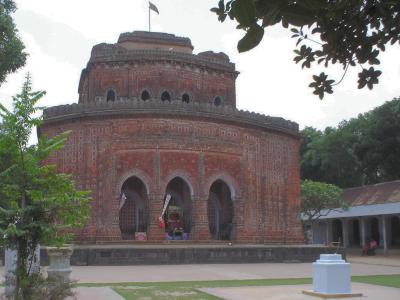
Kantanagar Temple
A night train north took me to the city of Dinajpur, famous for the nearby Hindu temple of Kantanagar. This spectacular building appears on nearly every tourist brochure and poster for Bangladesh, and was well worth the complicated journey by bus and foot required to get there. Built in 1752 in the late-Mughal style, its exterior is covered with thousands of sculptured terracota tiles depicting scenes from the Hindu epics.
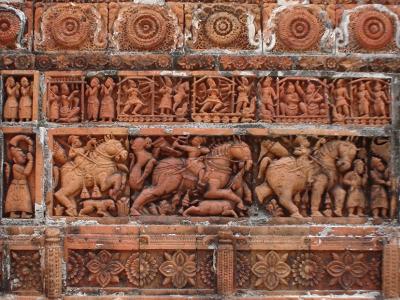
Temple Terracotta Tiles
Back in Dinajpur, I went to see the 'Rajbari' there. Rajbaris are the homes of wealthy Zamindars, or land-owners, and occurred throughout the countryside at one time. Many were destroyed in the great earthquake of 1897, but this one was preserved and rebuilt; today it is abandoned to a number of poor squatter-families who greet occasional visitors and are pleased to show them around. As usual, the children giggle with delight to see themselves on the screen of a digital camera.
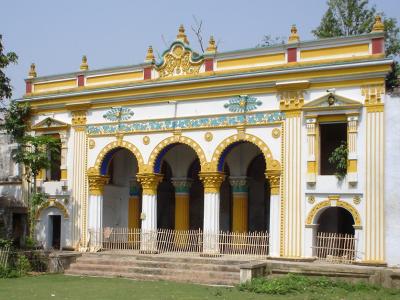
Dinjpur Rajbari
Some people have emailed to ask about the everyday landscape and farms of Bangladesh. Here is a shot that I hope sums up the scenery and typical small fields used all over the South Asian sub-continent. Note the lack of fences; it would be more expensive to provide them than to use the services of a small boy or elderly member of the family to watch where the goats, sheep and cattle wander.
In the bottom right, you can see a rice field that has been recently harvested, by hand, of course. Above and to the left are three other rice fields, still ripening. The taller stalks of a maize field show above that; the remaining fields are of vegetables.

A Typical Rural Scene
If you've ever wondered what rice looks like on the stalk, here's a closeup to show you.

Rice Plants
A little further south-east, near to the market-town of Jaipurhat are the splendid Buddhist remains at Paharpur. The Somapuri Vihara there was formerly the biggest Buddhist monastery south of the Himalayas, and today, though dilapidated, still rivals the Buddhist monastery at Nalanda, in Bihar. It dates from the 8th century AD, and is in the shape of a large quadrangle covering 11 hectares.
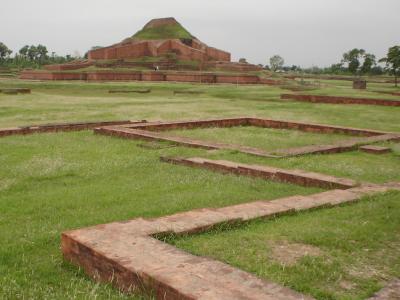
The Somapuri Vihara at Paharpur
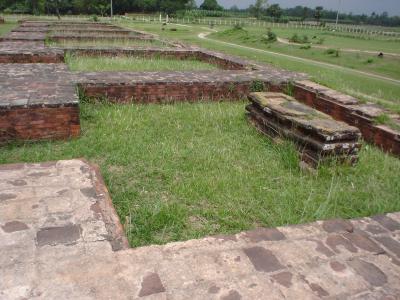
Monks Cells and Statue Base
The 170 or so monks cells make up the walls, and enclose the central courtyard, from the centre of which rises the 20 metre high remains of a stupa that once dominated the countryside. The entire building is made from brick, though the walls in some places are decorated with sculptured terracotta tiles. A small museum nearby houses some excellently maintained relics, both domestic and religious, found in the excavations. The highlight is a large bronze Buddha. Entry to the museum and the site costs 2tk.
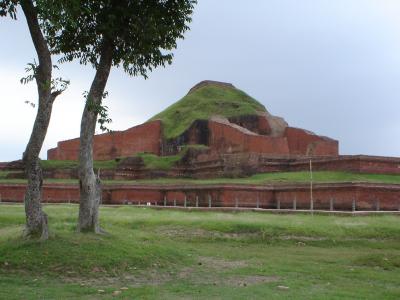
Stupa From The North
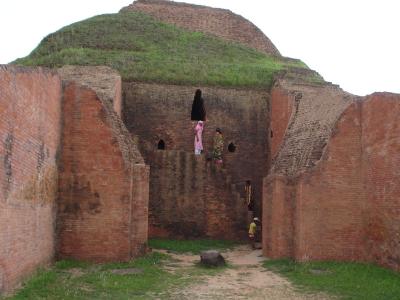
Stupa Closeup
Posted by travellingtim at May 14, 2005 02:11 PM
